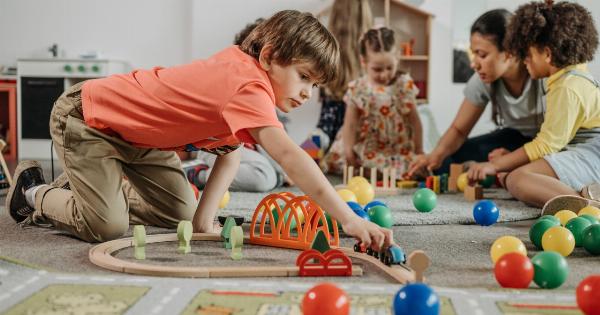Toddler behavior issues can be a major concern for parents and teachers alike. As children begin to explore the world around them, they may have difficulty regulating their emotions or understanding social norms.
Behavior issues can range from tantrums and aggression to defiance and withdrawal.
Fortunately, there are strategies that you can use to address these issues and support your child’s social and emotional development.
In this article, we’ll explore some of the most effective strategies for dealing with toddler behavior issues at school.
1. Set Clear Expectations
One of the most important strategies for dealing with toddler behavior issues is setting clear expectations. Children need to understand the rules and boundaries of the classroom, and they need to know what is expected of them.
Be sure to communicate your expectations clearly and consistently, and provide positive reinforcement when children meet those expectations.
2. Use Positive Reinforcement
Positive reinforcement is a powerful tool for shaping behavior. When children exhibit positive behavior, such as sharing, taking turns, or showing empathy, be sure to praise and reinforce that behavior.
This can be as simple as saying “good job” or “thank you for being a good friend.” Providing positive reinforcement can help children understand what they are doing right and encourage them to repeat that behavior in the future.
3. Provide Consistent Consequences
It’s important for children to understand that their actions can have consequences. When children exhibit negative behavior, be sure to provide a consequence that is consistent and fair.
This might mean taking away a privilege, such as playtime or a toy, or asking the child to take a break and reflect on their behavior. Whatever the consequence, be sure to follow through consistently and calmly.
4. Teach Social Skills
Many toddler behavior issues stem from a lack of social skills. Children may struggle with sharing, taking turns, or communicating their needs effectively.
Teaching social skills can help children navigate the social world more effectively and reduce behavior issues in the classroom. Be sure to model positive social behavior yourself and provide opportunities for children to practice social skills in a safe and supportive environment.
5. Create a Consistent Routine
Toddlers thrive on routine and predictability. Creating a consistent routine can help children feel safe and secure in the classroom and reduce behavior issues.
Be sure to establish clear routines for arrival and departure, transitions between activities, and other times of the day. Communicate these routines clearly to children, and be sure to follow them consistently.
6. Provide Plenty of Positive Attention
Children crave attention, and they will seek it out in both positive and negative ways. Providing plenty of positive attention can help reduce negative behavior and increase positive behavior.
Be sure to praise children for positive behavior, listen to their thoughts and feelings, and show interest in their activities. When children feel valued and appreciated, they are more likely to exhibit positive behavior in the classroom.
7. Offer Choices
Toddlers crave independence and autonomy. Offering choices can help children feel empowered and reduce behavior issues in the classroom.
Be sure to offer age-appropriate choices, such as “would you like to read a book or play with blocks?” or “would you like to use the blue crayon or the red crayon?” Providing choices can give children a sense of control and reduce tantrums and defiance.
8. Use Re-direction
When children exhibit negative behavior, it can be helpful to use re-direction. This means redirecting the child’s attention to a positive activity or behavior.
For example, if a child is hitting another child, you might say, “let’s use our hands for gentle touches” and model gentle touching. Re-direction can help children calm down and focus on a more positive activity.
9. Practice Empathy
Practicing empathy can help reduce behavior issues in the classroom. Children may exhibit negative behavior when they feel frustrated, anxious, or overwhelmed. By practicing empathy, you can help children feel understood and supported.
Try to see the situation from the child’s perspective and acknowledge their feelings. For example, you might say, “I can see that you’re feeling frustrated. Let’s take a few deep breaths and figure out how we can solve this problem.”.
10. Seek Support
Finally, if you are struggling with toddler behavior issues in the classroom, don’t be afraid to seek support. Talk to other teachers or parents, seek guidance from a counselor or therapist, or attend professional development workshops.
By seeking support, you can gain new insights and strategies for helping children navigate social and emotional challenges.
Conclusion
Dealing with toddler behavior issues can be challenging, but with the right strategies, it can also be rewarding.
By setting clear expectations, providing positive reinforcement, offering consistent consequences, teaching social skills, creating a consistent routine, providing plenty of positive attention, offering choices, using re-direction, practicing empathy, and seeking support, you can help children develop the skills they need to thrive in the classroom and beyond.



























